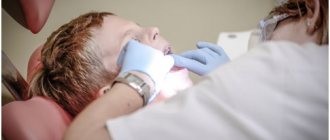Have you had accidental unprotected sexual contact with an unknown partner? Has the condom broken or is it known that your partner has sexually transmitted diseases? Then you urgently need drug prevention after an accidental relationship!
In fact, neither a condom nor antiseptics used after sexual intercourse protect against sexually transmitted diseases with 100% probability. We know of many tragic cases of infection with syphilis, gonorrhea, pubic lice and scabies in patients who used a condom and were treated with an antiseptic solution.
Drug prevention
Drug prevention is a complex of treatment and preventive measures aimed at destroying pathogens of sexually transmitted infections that are still in the incubation period, i.e. not yet showing themselves. If the patient has complaints, no prophylaxis is carried out. In this case, a detailed diagnosis of STDs is already necessary. The optimal period for prevention is 1-3 days. But some diseases (syphilis, chlamydia) have longer incubation periods and can be prevented for up to 3-8 weeks, but in this case prevention should be preceded by diagnosis. If the clinic has express tests, this can be done within 30 minutes.
The essence of prevention is a short course of antibacterial, antitrichomoniacal and antiviral therapy directed against the main pathogens of sexually transmitted diseases.
In our clinic, a full course of prevention after casual sex includes injections, IVs, tablets and instillations into the urethra in men or vaginal treatment in women. This type of prevention provides protection against sexually transmitted diseases in 100% of cases.
Tablet treatment used independently at home leads mainly to chronic infections.
Be more attentive to your health, consult a specialist and protect yourself from serious complications of sexually transmitted diseases.
TREATMENT FOR CHLAMYDIOSIS IS AVAILABLE IN THE BRANCHES:
Treatment of chlamydia in the Primorsky region
Address: St. Petersburg , Primorsky district, st. Repisheva, 13
Treatment of chlamydia in the Petrograd region
Address: St. Petersburg , Petrogradsky district, st. Lenina, 5
Treatment of chlamydia in Vsevolozhsk
Address: Vsevolozhsk , Oktyabrsky Prospekt, 96 A
There are different types of chlamydia: some of them infect mainly birds and mammals (Chlamydia pecorum), but species parasitizing both humans and animals have not yet been found in humans (Chlamydophila felis), and there are species found only in human (Chlamydia trachomatis, Chlamydia pneumoniae). Chlamydia penetrates mainly through epithelial cells.
Most often, chlamydia is transmitted sexually. Young people under 30 years of age are most susceptible to the disease. Frequent changes of sexual partners and non-use of mechanical contraception (condoms) increase the risk of chlamydia infection to 80-90% after the first sexual intercourse. There have also been cases of infection through pool water.
The clinical course of chlamydia infection depends on the type of bacteria that infects the person. Infection with serotypes L1, L2, L3 leads to a tropical venereal disease - lymphogranuloma venereum (inguinal lymphogranulomatosis). It is rare in our country and is an imported disease.
Serotypes D, E, F, G, H, I, Y, K are the cause of urogenital chlamydia. Most often transmitted sexually, less often through contact with dirty hands and mucous membranes of the eyes.
In newborns, when infected with Chlamydia trachomatis from the mother during childbirth, pneumonia may develop due to infection.
Prevention after casual relationships for men
Many people believe that after casual sex it is enough to get tested for STIs and, if the results are negative, to calm down and live a normal life. But it's not that simple. Each sexually transmitted infection has its own incubation period and time when it is not fully detected by laboratory tests. Therefore, if you come to see a venereologist a couple of days after contact, you should not rely only on diagnosis; at the same time, you need to do prevention after casual relationships in men. Then the likelihood of contracting most STDs is reduced to almost zero.
Prevention after unprotected intercourse in men is most effective within 72 hours of possible infection. During this period, preventive treatment of all sexually transmitted infections, even HIV, can be carried out.
Of course, prevention after casual relationships in men is carried out at a later date; with syphilis, it is possible up to 2 months from the moment of contact, provided, of course, that tests for syphilis are still negative. But the more time has passed after unprotected sex, the higher the likelihood of the infection transitioning from the incubation stage to disease. And accordingly, prevention will no longer be indicated, but specific treatment for a specific STD is necessary. Therefore, the sooner the better.
Prevention of STDs after a casual relationship for men has several stages, but usually it goes away in 1 doctor’s visit:
- Examination by a venereologist
- Conducting express blood tests for syphilis, HIV, hepatitis and urethral smears within 20 minutes
- Taking scrapings from the urethra for PCR diagnostics of latent bacterial and viral STIs to determine further treatment tactics after prevention.
- If rapid blood tests and a normal smear are negative, prophylaxis itself is carried out after casual relationships for men. Its duration is about 40-60 minutes. Intravenous and intramuscular administration of drugs that destroy pathogens of sexually transmitted infections in the incubation period
- Instillation of silver preparations into the urethra, which have a strong antiseptic effect, but are safer for the mucous membrane, unlike other antiseptics. If necessary, solutions are injected into the rectum and pharynx if anal or oral sex has taken place.
- A short course of therapy with tablet forms of antiviral and antibacterial drugs.
Prevention after unprotected intercourse in men is almost always well tolerated. Despite the simultaneous administration of several groups of antibiotics, antiviral and antifungal drugs, any side effects are rare and are usually associated with individual intolerance to the drugs. But these are always much smaller doses of drugs and a shorter course than when treating an already developed venereal disease, which undoubtedly will not pass without leaving a trace on the body.
Some patients are faced with the question of whether they need STD prevention after a casual relationship for men or whether they can be tested for infections in several stages and, if something is found, then treated. With this approach, several factors need to be taken into account:
- Not all sexually transmitted diseases can be cured if they are already deeply embedded in the body. HIV, viral hepatitis, herpes, papillomavirus infection, sometimes chlamydia and trichomoniasis are easier to prevent than to be a carrier or a sick person all your life, putting your family and friends at risk.
- The detection period for many STIs is several months, HIV sometimes up to a year. Accordingly, during this period it is necessary to abstain from sexual intercourse, especially without a condom, which is not always possible, especially in the case of married men.
- After many sexually transmitted diseases, serious complications and consequences remain in the form of chronic prostatitis, urethritis, balanoposthitis, vesiculitis, damage to the nervous system and internal organs, which could have been avoided by carrying out prevention after casual relationships in men.
- After suffering from syphilis, antibodies to it remain in the blood forever, so every time you take tests to undergo any medical examinations, for hospitalization, the results will be positive, despite the treatment, which raises a lot of questions from doctors conducting examinations and from employers who need employee medical records . And this, too, could have been avoided if preventive treatment of syphilis had been carried out at the stage of the incubation period.
Prevention after unprotected intercourse in men is carried out against most known STIs: syphilis, gonorrhea, trichomoniasis, chlamydia, mycoplasmosis, ureaplasmosis, gardnerellosis, candidiasis, HIV, hepatitis, viral infections.
The cost of prevention after casual relationships in men usually ranges from 1000 rubles. for 1 infection. There are complex preventive measures that include procedures against several STD pathogens at once: 3,500-10,000 rubles. for major infections. In order to protect the immune system, liver, and kidneys, cover-up drugs are prescribed, but then prevention becomes more expensive.
Prevention after casual relationships for men is carried out in our clinic every day. The selection of drugs and types of emergency preventive treatment for STDs is carried out by a venereologist after a thorough survey of the patient and the results of express diagnostics.
Random connection. What is the risk of sexually transmitted infection?
The best protection against diseases that arise “because of love” is true love and loyalty to your partner. Unfortunately, it is difficult to find your soulmate in our huge world. And catching STIs (sexually transmitted infections) is quite easy.
Why are STIs easily transmitted?
The fact is that against the background of the widespread use of antibiotics and anti-inflammatory drugs, the symptoms of any sexually transmitted infection can be blurred. That is, a person can be sure that he is healthy, but in fact be a carrier of chlamydia and infect his sexual partner with this infection. How to regain your peace of mind if changes have occurred in your life or you think you might have encountered sexually transmitted infections? Of course, there is only one way - to be examined in a timely and high-quality manner.
When is it time to go get tested after a suspicious contact?
If there are symptoms of discomfort, then it’s time to get examined. If there are no alarming symptoms, it is better to wait a couple of weeks. The fact is that the sensitivity of tests in the first days after infection is very low. But if symptoms have already arisen, there is definitely no point in postponing testing.
What tests should be taken if there is a suspicion of a sexually transmitted infection?
First of all, you need to be examined for chlamydia (causes chlamydia), gonococcus (the culprit of gonorrhea), mycoplasma genitalium (causes mycoplasma infection) and trichomonas (the cause of trichomoniasis). These are the four causative agents of the most common sexually transmitted infections. The symptoms of these diseases are similar and if they are detected, it is necessary to be treated, because their consequences can be very serious. For analysis, a urogenital scraping is taken (in men from the urethra, in women - vaginal), the analysis must be done using the PCR method, this method is the most accurate and sensitive in this case.
How dangerous are sexually transmitted diseases?
Chlamydia most often causes urogenital chlamydia, which affects the genitourinary tract. Both men and women suffer from it, but in women this infection is diagnosed more often, perhaps because women are more attentive to their health. Among the numerous complications, the most famous are endometritis and infertility in women and epididymitis in men, as well as reactive arthritis and conjunctivitis in people of both sexes. Chlamydia is most dangerous for pregnant women, as it leads to miscarriages, prematurity or fetal death.
Another common sexually transmitted disease is gonorrhea (gonococcal infection). Chronic gonorrhea is dangerous by affecting the bladder, kidneys, prostate and testicles in men, and the uterus and fallopian tubes in women.
The third infection, trichomoniasis, causes prostatitis, urethritis, and damage to the seminal vesicles and epididymis in men. In women - urethritis, inflammation of the vagina and cervix.
Finally, mycoplasma causes pelvic inflammatory disease, urethritis and other diseases. Not to mention that all four of these infections can complicate the course of pregnancy and its onset.
How long does it usually take from infection to the appearance of symptoms of an STI?
The acute form of chlamydia begins 2-4 weeks after the incubation period. Mycoplasma can detect itself a little later - 3-5 weeks after infection. Gonorrhea and trichomoniasis usually appear much earlier. As a rule, with any genital infections, pain, burning, purulent or mucous discharge from the genitals occur, and sometimes even a slight (low-grade) fever. Knowing this, some people are wary for a month, and if nothing like this happens to them, they calm down. But in vain, because in half of the cases, sexually transmitted infections are asymptomatic or with minor manifestations, which often disappear when the infection becomes chronic. However, these diseases are very rarely cured on their own. The earlier any of the sexually transmitted infections is detected, the faster and more successfully it will be possible to recover, which, alas, cannot be said about advanced forms, which are very difficult to get rid of, as well as the complications they cause. Therefore, it is better not to delay too much with the tests. To determine the maximum range of possible pathogens of sexually transmitted infections, you can use a comprehensive laboratory test - DNA of STD pathogens.
Says that provocation in the form of beer, salty or spicy food before the study increases the accuracy of the study?
Any such provocation can aggravate existing chronic diseases of the gastrointestinal tract, liver and kidneys. This action will not affect the accuracy of detecting sexually transmitted infections. From the standpoint of evidence-based medicine, the use of biological, chemical and food provocations in order to increase the efficiency of diagnosis of urogenital trichomoniasis and other STIs is completely inappropriate. To ensure that the analysis does not deceive, you just need to do it using the appropriate method. For example, the Russian Association of Dermatovenerologists recommends using only real-time PCR for this purpose, as the most sensitive, specific and fastest diagnostic method. For analysis, in women, as a rule, a vaginal scraping or a scraping from the cervical canal is taken, in men - a smear from the urethra. Then the DNA of the pathogen is isolated using PCR. In 1-2 days the analysis will be ready. The PCR method is excellent for the primary diagnosis of an existing disease; to use it for monitoring after treatment, you need to understand the essence of the method. Antibiotics kill the causative agent of STIs, but its DNA (genetic material) can remain in the epithelial cells of the urogenital tract for another couple of weeks. Therefore, it is impossible to do a control test early after the end of the course of treatment, since the possibility of obtaining a false positive result cannot be ruled out. You need to pause before taking the test: at least 3 weeks after taking the last pill.
Prevention after casual relationships for women
Protecting yourself from the consequences of sexual intercourse with a casual partner is quite possible for a woman at any age and in any state of health. Competent and experienced medical specialists know how to do this competently, safely and with a high probability of a positive result.
Not a single woman is immune from unplanned sexual intercourse, as well as from the infections that can be obtained from them. And if this has already happened, you should take care to minimize the possible consequences. Our clinic provides prevention of sexually transmitted diseases in women who have had a relationship with an unverified partner no earlier than 2-3 days before visiting a dermatovenerologist. Therefore, it is not worth postponing a visit to the doctor indefinitely: it is in the patient’s interests to seek help as early as possible.
STDs that can be treated preemptively include:
- syphilis;
- gonorrhea (gonorrhoea);
- chlamydia;
- ureaplasmosis;
- mycoplasmosis;
- trichomoniasis;
- candidiasis;
- molluscum contagiosum.
Unfortunately, HPV, genital herpes and hepatitis viruses, as well as HIV, are resistant to any medical preventive measures and procedures. Emergency measures that are recommended to be taken in the first hours after contact (mainly washing and douching with antiseptics) also do not reduce the likelihood of infection with the above diseases. This is also why the doctors at our medical clinic recommend not delaying the decision to visit a doctor, because timely tests and identified infections allow you to begin treatment in the early, uncomplicated stages of the disease.
For each patient who contacts our dermatovenerologists, an individual treatment regimen is developed taking into account existing concomitant diseases, contraindications and intolerance to certain groups of drugs.
As a rule, the prevention of STDs after a casual relationship for women is carried out according to the same protocol as the treatment of corresponding diseases that occur in an uncomplicated form. For example, preventing gonorrhea includes the same medications as treating it. The same applies to all other infections.
Preventive medications in this case are antibiotics, which the patient receives orally, vaginally or by injection in a loading dose. Therefore, prescribing such drugs to yourself and taking them without the supervision of a doctor is dangerous and can cause significant harm to the body.
Two weeks after the prophylaxis, our doctors suggest that the patient undergo tests. They will help make sure that the infection has not “taken root” in the body.
A casual relationship is not an event you want to be proud of. But there is no point in being ashamed, much less hiding what happened from the attending physician. By turning to our medical center for help, every woman receives:
- qualified assistance from competent specialists at a reasonable, adequate cost;
- the opportunity to take control tests in a modern high-precision laboratory;
- no queues, delays or delays;
- absolute confidentiality;
- friendly attitude from the clinic staff.
Did something unexpected happen? Contact one of our doctors at any time of the day and get effective help at a professional level!
Where to go?
It is best to go to a dermatovenereal dispensary or a specialized medical center, where you can get advice from a dermatovenerologist. The fact is that gynecologists, urologists, and family doctors can deal with STIs, but so far in our country there are no unified concepts for the treatment of STIs. And they are best mastered and supported by practice in specialized medical institutions.
Prevention after casual relationships Gardnerella Gardnerrella vaginalis
Prevention of gardnerella is necessary when there has been contact with a man or woman in whom gardnerella was detected in an STI test, or it is not known at all whether this sexual partner is healthy.
Standard comprehensive prevention of STDs after casual sex usually includes drugs to kill Gardnerella. But sometimes it is necessary to carry out isolated prevention of gardnerellosis, when there is a risk of contracting only this particular infection.
Gardnerella is an opportunistic infection that causes bacterial vaginosis in women, and can provoke balanoposthitis and prostatitis in men. But very often gardnerellosis occurs latently and asymptomatically, which leads to a massive spread of infection.
Prevention of gardnerella is carried out for all men who have sexual contact with women with bacterial vaginosis, and for all women who have had sexual intercourse with a partner who has gardnerella urethritis, prostatitis or balanoposthitis.
Before preventing gardnerellosis, a gardnerella test is performed. Ideally, a smear on the flora and PCR diagnostics are done, but in some cases they are limited to an express smear, which provides information about the inflammatory process and the presence of gardnerella in the vagina, urethra or on the skin of the penis within 20–30 minutes.
If gardnerella is not detected in the smear, then prophylaxis is carried out. If it is found, then prophylaxis is not prescribed, but its specific therapy is developed.
Typically, STD prevention after a casual relationship is carried out on the day of the patient’s initial appointment. The same applies to measures to prevent gardnerellosis.
It is important to carry out the procedures while the pathogen is in the incubation period and is not detected in tests.
How is gardnerellosis prevented?
- After examination by a venereologist and a negative test for gardnerella, the patient is sent to the treatment room.
- A drug, usually from the group of imidazoles, is administered intravenously at the maximum therapeutic dose.
- Next, in the urology office, the doctor instills a silver preparation into the urethra or a vaginal bath with an antiseptic solution and imidazole. An antibacterial cream or gel is placed in the vagina.
- Tablets may also be given to your home.
- A week later, a gardnerella test is taken to check the effectiveness of the prevention.
Prevention of Gardnerella is especially important for women with impaired vaginal microflora. If their sexual partner introduces gardnerella into the vagina, then a relapse of bakvaginosis will occur, which will require long-term complex treatment.
Prevention of gardnerellosis after casual relationships is effectively carried out only in a clinic under the supervision of a venereologist or gynecologist. Self-medication and self-prevention with medications usually lead to the development of chronic STDs.
The cost of STD prevention is from 1000 rubles. Instillation into the urethra and vaginal bath - 800 rubles.
Prevention after casual relationships Herpes Herpes viridae
Prevention of herpes and other viral infections after sexual intercourse is much more difficult than bacterial STDs.
It is very difficult to achieve complete elimination of the virus if it has already penetrated into cells, and even more so into nerve nodes. That is, prevention of genital herpes is possible only in the first days after infection, before the virus reaches the node along the nerve trunks and remains there forever, manifested by periodic exacerbations of herpes infection.
As for effectiveness, the prevention of herpes is very much inferior to the usual prevention of STIs for the sole reason that at the moment there are no drugs that can kill the virus located in organs and tissues. All medications only inhibit its activity and reproduction in cells.
The usual standard prevention of STDs after a casual relationship does not include measures against herpes.
Prevention of genital herpes is included in the already expanded version. Although sometimes it is performed in isolation, when it is known that the sexual partner is sick only with this infection.
When is herpes prevention indicated after an accidental relationship?
- In principle, always if there was contact with an unfamiliar partner. Because herpes is very widespread and even in the absence of visible manifestations can be found in the mucous membrane of the genital tract and oropharynx.
- Definitely, if you have sexual contact with a person who has sores, crusts, or blisters on the genitals, then there are clinical manifestations of herpes.
- During oral contact with a partner who has symptoms of a “cold on the lips,” that is, labial herpes.
- During anal intercourse, if there are erosions in the anal and perianal area.
- Of course, herpes rashes can be deep in the vagina, rectum, or on the oral mucosa and not be noticeable. Therefore, it is very difficult to focus on symptoms. And that's why herpes is very common. A guarantee can only be a trusted permanent partner or timely prevention after sexual intercourse.
How is herpes prevented after casual relationships?
It is advisable to start it immediately after contact, treating the skin and mucous membranes of the genital organs with antiseptic solutions of miramistin and chlorhexidine. You can also apply one of the antiherpetic creams and immediately consult a venereologist at the clinic, where they will carry out full prevention after sexual intercourse, which includes:
- Examination by a doctor to check for STD symptoms.
- Express smear for flora.
- Express tests for syphilis, HIV, hepatitis.
- PCR analysis for STIs and herpes including.
- Blood test for antibodies to herpes viruses.
- Intravenous or intramuscular administration of abnormal nucleosides, interferon, interferon inducers to block the reproduction and spread of the virus in tissues. Dosages and course duration are determined by a venereologist. The results of laboratory diagnostics are taken into account.
- If there are no manifestations of herpes infection, after 3 weeks, blood is donated for immunoglobulin M for all types of herpes, and a month later the blood test is repeated with the addition of immunoglobulin G.
- If the results are negative, prevention of genital herpes is considered effective.
Prevention of STDs after a casual relationship should be carried out exclusively in a clinic under the supervision of a venereologist. Doing this at home is unacceptable! The result of self-medication can be unpredictable - from the transition of the infection to the chronic stage, to anaphylactic shock to drugs.
The cost of herpes prevention is from 1000 to 5000 rubles, depending on the chosen regimen and route of drug administration.
Diagnosis of chlamydia
As is the case with many other diseases, especially gynecological ones, regular visits to the doctor and timely diagnosis of chlamydia will help avoid many negative side effects. If you have an active sexual life, it is recommended to test for chlamydia at least once a year.
Diagnosis of chlamydia is primarily related to:
- with cytological analyzes of smears from the infected area.
- with bacterial seeding of cells from scrapings (makes it possible to perform an antibiogram - the sensitivity of infectious cells to certain drugs).
- with PCR analysis of cells from affected areas (polymerase chain reaction) - allows you to isolate chlamydia DNA fragments and determine the type of microorganisms.
- with a blood test - analysis for chlamydia, assessment of the level of immunoglobulins IgM and IgG (antibodies) - formed in the human blood during infection under the influence of foreign proteins (antigens).
The importance of cytomegalovirus prevention
Cytomegalovirus can remain in tissues for a long time without detecting itself. Most often, the disease is transmitted through saliva, through casual sexual intercourse. However, infection does not always occur after the first contact.
Pathogenic bacteria can remain in a “dormant” state in a person for a long time and become active after provoking factors - a decrease in the defense of the immune system, colds, hypothermia, stress, illness. Cytomegalovirus cannot be completely cured and can affect vital organs and systems, which is why prevention after casual relationships is so important. Signs of the disease may be:
- general weakness;
- frequent headaches;
- fever;
- persistent mild runny nose;
- enlarged lymph nodes;
- temperature increase;
- muscle soreness.
Drug prophylaxis after unprotected intercourse is the primary treatment to help prevent the spread of the disease. It can affect the respiratory tract, lungs, pancreas, and kidneys. Sometimes the virus invades the lymph system, retina, and liver. As a result, not only the functioning of the listed organs is disrupted, but also those nearby. As a result, a person’s condition can worsen to critical, even death.
Diagnosis and prevention of the virus
Prevention methods are divided into “home” and medicinal. In the first case, you may not only not get rid of the virus, but also provoke the development of other pathologies. Even after measures taken at home, it is necessary to be diagnosed for the presence of the virus. It can only be detected using laboratory tests. Our clinic has modern equipment that eliminates misdiagnosis and helps to quickly detect the disease.
Prevention of cytomegalovirus is carried out with medication for several days. This is the most reliable way. Our clinic employs highly qualified specialists who successfully prevent infection after casual relationships:
- Drugs are prescribed to prevent the activation of the virus or the development of infection.
- Antibiotics are selected individually, taking into account contraindications and other medications.
- The genitals (externally and internally) are treated with special solutions, which significantly reduces the risk of infection. Douching is done, followed by the prescription of agents that restore the vaginal microflora.
- A vitamin complex is selected to restore or strengthen the immune system.
- Prophylactic treatment is provided for several days.
- An examination is carried out by a venereologist and urologist-andrologist.
- All laboratory tests are performed (blood, saliva, urine testing, smears are taken). The results will be ready within 24 hours.
- Intramuscular and intravenous administration of necessary drugs. Patients undergo allergy tests in advance.
Our specialists will inform you about effective ways to prevent possible infection and recommend medications that can be taken after casual relationships without harm to health.
Cytomegalovirus, once it enters the body, is practically incurable. However, it is possible to prevent the activation of the pathological process. We suggest visiting our Private Practice clinic and completing a full course of prevention with the involvement of all the necessary specialists. Due to the presence of our own laboratory, test results are guaranteed to be accurate and fast.
Cost of treatment for chlamydia:
| Services list | Price in rubles | |
| Saint Petersburg | Vsevolozhsk | |
| Initial appointment with a 1st stage obstetrician-gynecologist | 1850 | 1500 |
| Repeated appointment with a 1st stage obstetrician-gynecologist | 1650 | 1300 |
| Primary appointment with an obstetrician-gynecologist, stage 2 | 2100 | — |
| Repeated appointment with an obstetrician-gynecologist, stage 2 | 1900 | — |
| MANIPULATION | ||
| Insertion of obstetric pessary | 1500 | 1500 |
| Insertion of an intrauterine device (IUD) | 2500 | 2500 |
| Insertion of the Mirena intrauterine device | 4000 | 4000 |
| Introduction of the implantable contraceptive IMPLANON (without the cost of the contraceptive) | 2500 | 2100 |
| Videocolposcopy | 1700 | 1700 |
| Smear collection (gynecological) | 400 | 400 |
| Instrumental removal of the intrauterine device (IUD) | 2500 | 2100 |
| Intravaginal administration of suppositories (without the cost of medications), 1 procedure | 500 | 500 |
| Therapeutic treatment of the vagina | 700 | 700 |
| Medical termination of pregnancy | 8000 | — |
| Local treatment of the external genitalia | 700 | 700 |
| Removing the obstetric pessary | 1000 | 1000 |
| Removing the intrauterine device (IUD) | 1500 | 1500 |
| Removal of the Mirena intrauterine device | 3000 | 3000 |
| Removal of the implantable contraceptive IMPLANON | 2500 | 2300 |
| Removing a foreign body from the vagina | 1800 | 1800 |
| Line biopsy of the endometrium (pipe diagnostics) | 1500 | 1200 |
| PRP therapy | — | 3500 |
| ULTRASONIC AND FUNCTIONAL DIAGNOSTICS | ||
| Ultrasound of the pelvic organs (one sensor) | 1600 | 1300 |
| Ultrasound of the pelvic organs (two sensors) | 1900 | 1500 |
| CTG (fetal cardiotocography) | 1800 | — |
| CTG (multiple pregnancy) | 2300 | — |
| Folliculometry (1 study) | 1400 | 1400 |
| Folliculometry (4 studies) | 3900 | 3900 |
| LASER SURGERY | ||
| Cervical biopsy + histology | 5000 | 4000 |
| Single cervical cyst | 1500 | 1500 |
| Single papillomas and condylomas of the vaginal walls | 3000 | 3000 |
| Common condylomatosis, papillomatosis | from 6000 | from 6000 |
| Removal of single condylomas, papillomas of the vulva, cervix (for 1 unit) | 600 | 600 |
| Ectopia (erosion) of the cervix (less than 2 cm) | 6000 | 4000 |
| Ectopia (erosion) of the cervix (more than 2 cm) | 9000 | 9000 |
| Endometriosis of the cervix (single lesion) | 1000 | 1000 |
| RADIOSURGERY | ||
| Biopsy of the cervix with a radioknife | 2500 | 2000 |
| Treatment of leukoplakia and vulvar kraurosis using a radiosurgical knife | 5300 | 5100 |
| Treatment of cervical pathology with a radiosurgical knife up to 1 cm | 5000 | 3700 |
| Treatment of cervical pathology using a radiosurgical knife up to 2 cm | 6500 | 6000 |
| Removal of cervical polyps using a radiosurgical knife | 4000 | 2500 |
| Fulguration of cysts, endometrioid lesions using a radiosurgical knife | 3500 | 2200 |
| Electrocoagulation of condylomas on the skin in the perineal area with a radio knife (for 1 unit) | 800 | 800 |
| Electrocoagulation of condylomas, papillomas of the vulva with a radio knife | 1400 | 1400 |
| Electrocoagulation of condylomas, vaginal papillomas with a radio knife | from 3200 | from 3200 |
| OPERATIONS | ||
| Intimate contouring | — | 26000 |
| Surgical defloration | 8000 | 8000 |










